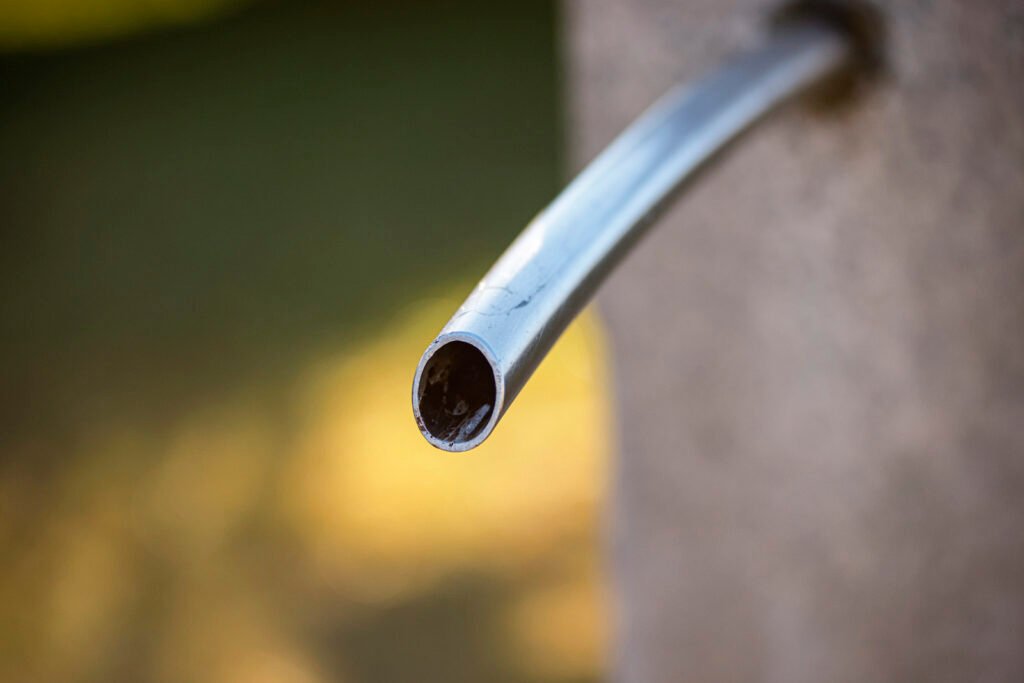NB: This is a draft article with a number of omissions and content to be added. If you have any in-depth information, or original manufacturer manuals, catalogues or period advertisements that might be relevant, please email Mark here. Peer review and contributors welcome, and will be credited. Similarly, if you have any memorable images shot with these lenses, we’re happy to show them in our gallery with a link to your social media or website.
At times the Isco brand has been viewed as second-tier – the Seat to Volkswagen’s Schneider; Robin to its Batman. The name itself, though, couldn’t be more personal to its founder – a near-monogram of Iosef SChneider Optical. There were periods when Isco operated as an independent rival rather than a controlled subsidiary, at moments even eclipsing its parent’s output. We’ll touch on those stories later: that’s not the purpose of this article. Isco’s corporate history is well documented elsewhere: how the second World War and its aftermath intervened and shaped Schneider’s Optische Werkes in Kreuznach and Isco’s operational base in Göttingen; the separation of the post-war period; the divorce of 1982, and the reconciliation that brought Isco full-circle from its founding in 1936 to its re-absorption in 2008.
Before addressing the intended topic, let’s consider something else we’re not going to discuss: Schneider’s Isco-branded taking lenses, whose heyday spread across the late 1940s and 1950s. Although information has been published about release dates of many models, there wasn’t a timeline of serial numbers in a referenceable format. To acquire the chronology we were interested in, we had to create one. It turned out to be germane to our endeavour not in the slightest. It is offered here anyway:
Serial Number Guide for Isco Taking Lenses (1936-1970)
Westar 50/2.8 from 1952
Isco name from 1953
Westrogon 24/4 – from 1958
Kiptar from early 1950s
Extenar bellows lens (1960s)
Iscorama (Isco Gottingen) from 1968 – 4135142, 4156254
Plastic barrel and Berolina lenses (Isco-Gottingen) from 1964-1970 had 3xxxxxx, to 5xxxxxx serials. I
Westar triplets, Westanar, Westagon, (silver aluminium barrel: 1952-1957)
Zebras from c.1957
9968 – Schneider-Gottingen just after 1942
33423 – Schneider-Gottingen Aerial (pre-1953)
138764 – Isco Gottingen 1952/3
236076 – Isco Gottingen Westar 1952?
264996 – IscoGottingen Westar 50 – 1953?
345614 (from 1954)
545835 – Isco Gottingen Isconar 50/2.8 – 1955-6?
591432 – Isco Gottingen Westanar 180 – 1957?
624566 – black V1 Westron 35/3.5 – c.1958
625043 – Isco-Gottingen Westanar – c.1956-7
628995 – Tele-Westanar (post 1958 relaunch)
658085 – Zebra Westrogon
676208 – Tele Iscaron (post-1957 launch)
690100 – Iso-Gottingen Westrogon – post 1958 launch
706594 – Iscaron 135/2.8 (post 1959 launch)
734271 – Westron 35/2.8 – post 1959 launch
770847 – black Westron 28/4 (post 1961 launch)
772347 – Westron 35/2.8 (post 1959 launch)
774853- Isco-Mat LM 50/1.9 (post 1961 launch)
902924 – zebra V2 Weston 35/3.5 (post 1961 launch)
Unfortunately, the article we wanted to write for Delta focuses on Isco’s other lenses, which operate an entirely unrelated serial number scheme. We’ll come to that later. However, thinking about Isco’s range of offerings brings us to another topic we don’t intend to discuss . . .
Isco Enlarger Lenses
Isco briefly dabbled in the enlarger business in XX, and created a small, otherwise unremarkable series of plastic-barrel triplets variously branded Iscora and Iscorit in 50mm and 75mm focal lengths. We’ll spend as much time exploring them – proportionally – as they did making them, allowing us finally to get to the main point of the article.
Isco Slide Projector Lenses
The Isco brand is perhaps most familar in the context of projection. Several generations of domestic users, from the post-war period all the way through to the 1990s, had a high chance of finding an Isco lens on their cine camera, cine projector or slide projector – no matter the make. Kodak, Philips, Rollei, Gnome, and many other manufacturers offered a ‘second-tier Schneider’ as their default optic. They were generally cheap, cheerful and unserialled. They came in many types of (usually plastic) housings. You’ll find over a hundred in the main archive, but they can be summarised and broadly dated as follows:
Slide Projector Lenses:
Connection to Kodak, rebranding. Isco Optic v Isco Göttingen. v Isco Germany
Isco Projar 35/3.5, 85/2.8 CF, 135/3.5, 180/3.5, 250/4.0
Isco-Göttingen Projar 85/2.8, 100/2.8, 250/4.3
Isco-Göttingen Phillips-Vario-Projar 70-120
Isco-Göttingen Carousel Projar 60
Isco-Göttingen Vario-Projar 70-120/3.5
Isco-Optic Projar 85/2.8
Isco Rollei-Vario-Projar
Isco Rollei Projar 200/3.5
Isco S-Projar 90/2.4
Isco Rollei S-Projar 90/2.5
Isco V-Projar 85/2.8
Isco Optic AV 60-110
Isco-Optic Ultra-AV 45/2.8
Isco-Optic PC-Ultra-AV 60
Isco PC-Cinelux-AV (Kodak mount) 60/2.8
Isco-Optic Cinelux AV 110-200/3.5
Isco Germany Cinelux AV 100/2.4, 150/2.8,
Isco Optic Vario-Projar 85-150/3.2
Isco Philaron 16mm projector lens 50/1.3
Isco Kiptaron 50/1.2, 50/1.6
Isco Vario-Kiptagon 16.5-30 (8mm), 18-30/1.4
We’ may have given the (not entirely unfair) impression that Isco offers afficionados and collectors little in the way of temptation. However, there are some fine optics among the later slide projector lenses: the Isco Rollei S-Projar 90/2.4 and 90/2.5 stand comparison with the Leica Colorplans and best Zeiss equivalents. The PC-Ultra and Cine-Xenon lenses were optically identical to the Schneider-branded versions that unreasonably command higher prices. In terms of company specialisms, though, all the types of lens we’ve considered thus far were sideshows for Isco. And so we finally come to the company’s home territory and true specialism . . .
Isco Cine Projector Lenses
Kiptar & Super Kiptar
We find references to Kiptars as far back as 1891, in the April 25th edition of the London Illustrated News. But the history of these richly embroidered, sleeveless, sheepskin jackets is woven deep in the fabric of the Hutsul people of Ukraine, and has no obvious connection to the range of theatrical cine projection lenses launched by Isco in XXX.
Isco-Göttingen (Isco Optische-Werke) Kiptar [V1] 1946-X – 4 element
Isco-Göttingen (Isco Optische-Werke) Super Kiptar [V1] 1946-X –




Isco-Optic Kiptar
Super-Kiptar 6 element (AKA Philips SP and SK-S?)
Cinelux and UltraStar HD
We first encounter Cinelux in the lexicon in 1928 as the Paris-based innovators of a 17mm paper film process variously entitled Film Oxophone / Ozophone / Ozaphane as it migrated to Dutch, German, Italian and American cinemas of the early 1930s.* Numerous reports of the period refer to the use of Cinelux sound and film projection equipment, or, films being presented ‘In Cinelux!’ A Cinelux Corporation was established in New York in 1937. Unrelated, there was a series of German slide projectors branded Cinelux in the 1950s, and a British company of the same name founded by Fred Benson in the 1930s for the purpose of publishing books about small format cine projection. There were cinemas called Cinelux. It was a naturally resonant name – but beyond that final fact, none of the preceding is relevant either.
FIRST GENERATION (1948-1973)
In this context the story begins in July 1970 with a US trademark filing of ‘Cinelux’ by Kollmorgen, which the company immediately used to rebrand and relaunch at lower prices its BX 241 six-element cine projector lenses, intially released in 1947 when the company’s production base was located in Brooklyn, New York. Kollmorgen’s history of ground-breaking cine lenses is long and distinguished, but the recession-hit company was rapidly losing interest in this side of its business in the early 1970s, and so their contribution to this narrative is less important than you might expect. The Northampton*-made Kollmorgen Cinelux f1.9 was marketed for barely a handful of years. At the time, it wasn’t Kollmorgen’s keenest product and ultimately donated no more than the name and inspiration for the brassy aesthetic.
The Cinelux you’re thinking of – a high-end 35mm projection lens – is more meaningfully a spiritual descendant of the Baush & Lomb Super Cinephor of 194X – that talisman of rising American dominance of the post-war landscape. Aimed at restoring the previously unassailable reputation of German engineering, Schneider’s version, launched by the company’s Isco division in 196X, was the six-element Super-Kiptar.
By late 1972 Schneider found themselves simultaneously wanting to launch an improved, but slower, Super-Kiptar, and in possession of the Cinelux brand name purchased by Schneider USA for $1 in the closing-down sale of Kollmorgen’s cine division – a bargain they nurtured, and from which they extracted tremendous mileage. Schneider wisely retained ownership of (and evidently regard for) the Cinelux brand for many decades, and reverted to a mere ‘Cinelux’ moniker in the brand’s final outing deep in the digital era. In the interim, Cinelux would endure many semantic bolt-ons signposting its evolution – a roadmap of which is required to differentiate the plethora of Cineluxes in today’s used market.
SECOND GENERATION (1973-1977)
A press release of 1973 notes that the US-made Kollmorgen Cinelux f1.9 range had been superceded by a new Schneider-designed Isco-Göttingen Cinelux f2.0 with improved “definition, colour contrast and colour rendition”. For some time after 1973 (Kollmorgen lenses are still credited as Schnieder products in 1977), we see lenses marked Kollmorgen Cinelux f2.0 Made in Germany, with Schneider-style (out of sequence) serials. We can safely assume that third generation Cineluxes are a different formulation but what unholy communion of parts these represent is unclear. The working relationship between Schneider USA and Kollmorgen in the mid-1970s was close: the companies shared the 1976 Technical Achievement Award for development of a single-lens magnifier. Perhaps Schneider shoehorned the updated Super-Kiptar optics into surplus Kollmorgen casings until the overstock ran out. Or maybe post-1973 Kollmorgen-marked Cineluxes are reclad BX 241’s, assembled in Germany by Schneider using surplus US-made optical elements, and they rounded up a mid-value aperture. Whatever the case, the Kollmorgen and Isco variants appear identical.
In 1973, Kollmorgen’s Cinelux 35 and Cinelux 70 lenses were supplanted by Isco/Schneider models claiming better performance at the expensive of less output – shifting from f2.0 to f2.4. By contrast, the outgoing f1.7 Cinelux Outdoor Lenses were relaunched with a faster f1.6 fixed aperture. These appear to be the same as Cinelux-Xenon, but it’s not clear when the change occured, and whether we can date Cinelux Xenon prior to 1977 (see below).
To place these backward-looking upgrades in historical context, the late 1960s and early 1970s witnessed the rise of UltraVision, pioneered by Kollmorgen – the first proper ‘HD’ revolution, demanding the use of slower, higher resolution lenses, with greater depth of field. Not until the 1990s did technology reach a level where 80lp/mm could be delivered by sub-f2.0 lenses. The best solution at the time was therefore to forgo the exciting brilliance of the f1.5 and f1.6 cine optics of the 1950s and optimise ‘stopped down’ designs for more even illumination and better performance in the outer image circle. The revelance of Cinemascope to this process, and the relationship between film curvature and field curvature is well told here.
THIRD GENERATION (1977-1985)
Spooling forward to 1977, Isco – still a wholly controlled division of Schneider – released the Isco-Göttingen Cinelux-Ultra f2.0 to immediate acclaim: in 1978 winning a Technical Achievement award from the Academy of Motion Pictures (an Oscar). The gold barrel Cinelux-Ultra’s were all six-element designs with a pair of cemented doublets in focal lengths above 45mm – increasing to seven-, eight- and nine-element designs in shorter focal lengths. The first two years of production appear to have been single-coated. The MC designation was added in 1979, when all air-facing elements were multicoated for the first ime. Perennially well-regarded, these were initially marketed (and priced) as premium lenses. A Cinelux-Ultra was destined to remain in production in three distinct variants until 2017, never quite disappearing from the catalogues, though from 1985 it became distinctly second tier: ‘ultra’ in name only.
CAPTION: Early Kollmorgen-style Cinelux-Ultra (with the big Capital C) seem to be identical, optically, to the post-1982 Isco-Optic Ultra MC and Schneider Cinelux-Ultra in serials below around 14,3xx,xxx. Schneider’s Cinelux-Ultra and Isco’s Ultra MC can be considered parallel performers and were in continuous production from 1983 until 2012. Isco was apparently the first to separate the Double-Gauss design into six air-spaced elements (perhaps as early as 1983) but Schneider followed suit quickly thereafter (certainly by 1995) and in both cases coatings were improved over time.
Isco’s fast but slow-selling (and expensive) Isco-Göttingen Cinelux-Xenon now look more interesting as taking lenses with their f1.6 aperture – if you can find one. Like its slower sibling, between 1977-1979 these were intially single-coated, but acquired full multicoating (and the MC designation) from 1979. The MC version (at least) deployed a more robust 6 / 6 air-spaced design suited to its target application. However, all these third generation lenses are inferior to those that followed.
In 1982, the story hits a fork in the road when Isco was bought out by private investors and began to operate as a separate entity. Isco Optische-Werke company was reformed as Isco-Optic Gmbh. After 1983, Isco was distributed in the US by Optical Radiation Corporation – one of the three new co-owners. Prior to 1982, Isco cine and slide projector lenses were usually marked ‘ISCO-GÖTTINGEN’ – the earliest lenses are marked ‘Isco Optische-Werke’ – but after 1983 all Isco lenses were marked ‘ISCO-OPTIC’. In a more long-reaching change, Isco lost a legal battle with Schneider in 1982/3 over use of the Cinelux brand.
Although Schneider retained ownership of the name, both parties appear to have been granted custody of the baby. Isco immediately re-christened it Isco-Optic Ultra MC f2.0 – acknowledging the new corporation, and the loss of the Cinelux brand. If you listen carefully you can hear the ellipsis: Isco [ . . . ]-Ultra. For the first time (though not the last) in 1983 we see a Schneider Cinelux-Ultra f2.0 [V1]. Between 1983-1985 these lenses were otherwise identical, but development now diverges, as the newly-rival operations competitively evolved the Cinelux ideal – if not the name.
FOURTH GENERATION (1985-1995)
Perhaps in the aftermath of an unsightly internecine squabble Schneider wished to distance itself from the tarnished Cinelux brand. Whatever the thinking of the moment, Schneider (somewhat perversely) temporarily shelved the contested moniker when in 1985 it debuted the Schneider Cine-Xenon range, covering focal lengths from 35-180mm. This wasn’t just a cosmetic makeover: multicoating was added to all surfaces and Schneider split the Double Gauss design into a more reliable 6 / 6 configuration. It was marketed as a replacement for, and upgrade of, Schneider’s Cinelux-Ultra (previously AKA Isco-Optic Ultra MC) – though only in focal lengths below 100mm. Tellingly, in Schneider’s own literature, they refer to developing an improved range of lenses from ‘the necessity to keep pace with constant technical advancements.’
Beacuse, meanwhile, the Isco elves had been equally busy. In the same year, 1985, the company launched its flagship: Isco-Optic Ultra-Star* HD, available in focal lengths from 26-112mm. Isco hadn’t stolen the brand, but it certainly stole Schneider’s thunder. Neither fourth generation lens bore the name, but both sported Cinelux-style gold housings (coated aluminium, not brass). Ultra-Star* HD was a seven-element formulation rising to nine elements at wider focal lengths. The buzz was hot, and for three years Schneider struggled to sell against the upstart wünderkind. The playing field tilted further when Isco received an Oscar for Technical Achievement in 1988, crediting the Ultra-Star* HD (not the squarely contemporary Cine-Xenon) for setting a new standard of theatrical projection excellence.
An interesting anomaly appears in the serial number survey: there’s a a sudden uptick of Cine-Xenon production in 1988-1989 – as though Schneider seized an opportunity to trade in a vacuum created by demand outstripping supply of the freshly garlanded Ultra-Star HD. The scarcity of Cine-Xenon lenses supports the theory that between 1985-1995 buyers generally opted for the Cine-Xenon only if the Ultra-Star HD wasn’t available.
Isco and Schneider, now trading as (somewhat unequal) rivals in this arena, both continued to sell third-generation products (Schneider Cinelux-Ultra and Isco Ultra MC) alongside their new, premium Cine-Xenon and Ultra-Star HD lines.
It’s worth emphasising how novel the original Ultra-Star HD was. Although Kollmorgen had a seven-element lens in XX, Ultra-Star was the first seven-element design of its era to take advantage of computer formulation, and offered edge-to-edge resolution far in advance of anything previously seen. The master lens for calculation of the optical formula was 75mm, not 100mm, as was usually the case. Curiously, Isco never declared its maximum aperture, either on the lens or in publicly published information. Practical testing and inferences drawn from later Isco literature suggest Ultra-Star* HD was between f2.0 and f2.1. Perhaps the company was concerned about the marketing ‘optics’ of a range-topping lens with a slower nominal maximum aperture. Isco’s messaging around the release of Ultra-Star* HD focused on the benefit of improved illumination versus the Ultra MC f2.0 – which was certainly true in the outer image circle – but harder to communicate if the lens had been titled Ultra-Star HD f2.1.
In any case the big step forward was consistency: Ultra MC f2.0 typically had a very small sweet spot, which deteriorated rapidly away from the image centre. UltraStar HD is not only slightly sharper centre frame, it maintains this performance across a wider area. We explore these properties in geater detail from the viewpoint of taking lenses later.
In 1987, Isco launched aperture-tweaked Isco-Optic Ultra-Star* Studio lenses in gold barrels with a blue line and star – typically with an internal f2.4 stop – and similarly blue anamorphic attachments. Blue was also the colour of the Isco-Optic Ultra-Star HD range for 70mm film, in focal lengths ranging from 38-112mm. Appearing somewhat later are Isco-Optic Ultra-Star Studio-AV f2.0 lenses in orange-gold matt-finish barrels.
Isco’s range of anamorphic-integrated Cinemascope lenses was offered at a price at least double that of the taking lens alone. As the anamorphic attachments are quite sought-after, it’s common to see unmarked orphaned Ultra-Star* HDs in the used market. These versions are integrally stopped to f2.4, which tends to make them the sharpest lenses of this type you can buy – a de-attached stock, gold-barrel Ultra-Star*HD may even outperform a red-barreled Plus with a screw-on f2.4 stop at the front.




FIFTH GENERATION (1995-2005)
Isco didn’t rest on its laurels, releasing new wide angle (26mm, 32mm and 45mm) Ultra-Star HD* lenses in 1996, and in 1999 the next-generation, red-barreled Isco-Optic Ultra-Star* HD Plus. Plus models had the same general optical pattern as the standard Ultra-Star* HD, but a recomputed formula and improved coatings. Isco uncontroversially claimed ‘more light on the screen’ and improved resolution. The original patent appears to present the HD Plus as an f1.9 lens, but the native maximum aperture of the production lens was evidently rated a fraction faster. Technology had put speed back on the agenda: f1.8 Ultra-Star HD* Plus came with optional threaded stops attached the front of the lens providing fixed stop-down values of f2.1, f2.4 and f2.7.
In 1996, Isco also launched the world’s first six-element anamorphic attachment for Cinemascope projection: the Blue-Star* HD.
However this time Schneider was not to be outdone. In fact, its next-generation product – Schneider Super-Cinelux – not only reclaimed the name and equal bragging rights, it beat Isco to it by four years. In 1995, Schneider released the results of a major rethink: axeing the ailing Cine-Xenons and replacing them with a superb new seven-element design that (temporarily) set a new standard, exceeding the performance of the standard Isco Ultra-Star* HD. Like Cine-Xenon, Super-Cinelux was offered in focal lengths up to 100mm. Above that, from 105-180mm, Schneider offered a refreshed version of the six-element Cinelux-Ultra subtly retitled Schneider Cinelux-Ultra 35/70, reflecting their suitability for either format, and correspondingly large image circles.
These fifth-generation models were all a step forward, featuring better coatings and supercomputer-assisted formulation. In some respects, this was the era of peak cine lens: demand was matched by fully mature products that even now offer impressive results as taking lenses. They certainly weren’t cheap, but they tended to be more affordable in their home territory: in 2002, the ex-VAT list price of the UltraMC 90/2 was €695, the UltraStar HD €850 and the UltraStar* HD Plus €XX. in 1999, Isco’s entry-level Ultra MC f2.0 was $1,370, and the standard UltraStar HD 90/2 was $1680. Contemporary prices of the Plus models, and almost everything Schneider offered, was in excess of $2,000 – sometimes much more – at today’s prices, easily twice those figures. And yet in the used market of 2023, Isco cine lenses can regularly be sniped for under £50; Schneider for less than £100.
Unusually for real life, the Cinelux story has a happy ending, with both partners walking into the sunset old and satisfied. Gracefully concluding years of rivalry, in 2000 Isco and Schneider both collected Oscars for their fifth-generation Ultra-Star* HD Plus and Super-Cinelux. [Query Isco oscar in 2001?]







The story doesn’t end there, but in the new millennium it begins to have about it the sunset glow of maturity and decline. Isco (late period lenses were simply marked ‘Isco’) continued to evolve Studio variants of UltraStar, and was still (just about) a going concern when reabsorbed by Schneider in 2008 – although the company was facing bankruptcy and had already (in 2006) canned the UltraStar* HD line. Nonetheless, Ultra MC f2.0 – Isco’s original ‘Cinelux’ – and Ultra-Star* HD Plus (its finest) remained in the catalogue until the end.
During this period Schneider also released 870 (in 2000) and 70mm-specific variants of the Super-Cinelux, and increased the range of focal lengths available between 2000-2005, but demand had dropped precipitously, and it was eyebrow-elevating that Schneider continued to innovate in this area.
Nonetheless, as if, once and for all, to establish its pre-eminence, Schneider commissioned a no-expense-spared version of the seven-element Super-Cinelux, firstfruits of which were released in 2002. Schneider unhurriedly added new focal lengths to for at least another five years, eventually culminating in a range spanning 32.5-100mm. The Schneider Cinelux-Première represents a category of its own. It was the only significant cine projection lens designed afresh this millennium. It features aspherical elements and a variable iris from a maximum of f1.7 down to f4.0, and It’s indisputably the best of its type.
Serial numbers (though not, presently, catalogues) indicate that Schneider also sold a lens simply labeled ‘Schneider Cinelux’ from 2005-2010 in the later, orange-gold matte barrel. Their specification and connection to Super-Cinelux or Cinelux-Ultra is currently unknown, but yhey are not thought to be a meaningful design iteration.
SIXTH GENERATION (2011-2017)
However, in a shock move that brought the brand full circle, in April 2011 Schneider gave Cinelux a black-swan finale. Deep in the digital era, having shelved Super-Cinelux, Schneider collapsed the Cinelux dynasty into a single range of what they were already calling ‘Classic Cinema’ projection lenses: Schneider Cinelux-Ultra f2.0 [V3] – in sombre black barrels with grey hoods – comprised 28 focal lengths (from 25-100mm) in 70.65mm (American) and 62.5mm (European) barrels – 56 variants in total, plus three anamorphic attachments.
What exactly were these ‘new’ mystery telecentric lenses? The barrels were designed for backward compatibility with gold-barrel Cinelux-Ultra and Super-Cinelux – Schneider, for sure. However, anecdotal rumours suggest the internals were pure Isco – and the timing looks right, coming two years after Schneider took ownership of Isco’s independently created Ultra-Star designs. The distinctive hex-bolt retaining ring of the Cinelux-Ultra V3; the naming of the upper tier anamorphic attachments (the five-element Ultra-Star HD 2x and the six-element Ultra-Black Star HD 2x); the spacing and range of focal lengths (for instance, the Super-Cinelux ultra-wide was 24mm but Ultra-Star and Cinelux-Ultra [V3] are both 25mm); the serial numbers (anamorphic attachments have in-squence eight-digit serials but taking lenses have Isco-style seven-digit serials) – all imply the final Cinelux was a fittingly joint effort – Schneider anamorphics with Isco trademarks, attached to Isco lenses with Schneider branding. It all become one in the end.
Also getting a black and grey makeover, Schneider’s Super-Cinelux f2.0 Variable Primes sat alongside their ex-Isco siblings in 70.65mm barrels only – ten short zoom lenses from 29.3-30.9mm to 47.5-52.9mm fleshing out the Cinelux-Ultra [V3] line-up.
But what are we to make of Schneider’s apparent decision to favour ex-rival Isco’s Ultra-Star* HD Plus optics over their own Super-Cinelux? Behind closed doors at Schneider was there private consensus that Isco’s design was superior? Or was it just more economical to produce? The vanishingly small number of people with answers to those questions are unlikely to reveal answers.
‘Vanishingly small numbers’, coincidentally, is a fair description of sales volumes for the (chronologically) ultimate Cinelux. Who was buying new analog cine projection equipment less than a decade ago? List prices of the 30-100mm Cinelux-Ultra were all around €1200, with the more complex 25mm and 27.5mm coming in at €1,450 and €1,660 respectively. These prices are all notably less than Schneider’s own deleted Super-Cinelux and Cinelux-Premiere, and the 70.65mm barrel versions were 5-10% cheaper than the 62.5mm variants. The Cinelux-Ultra Anamorphics (42.5-100mm) hovered just under €3,000 – cheaper than the Cinelux Ultra-Black Star HD 2x Cinemascope attachment (€3,100). Cinelux-Ultra Variable Primes ranged from €1,760-2,000 – all prices correct in 2011. In 2023 money, roughly half as much again. On the used market, they’re rarer than Cine-Xenons, but they were in the catalogue until 2017.
The commitment needed to maintain an all-but-obsolete product in the marketplace, comprising almost one hundred product variants, testifies to Schneider’s sheer classiness, integrity, fair-mindedness, and determination to make Cinelux succeed. And well done Isco, without whom it wouldn’t have happened. Those who enjoy rooting for the underdog may take the view that when the dust had settled, Isco’s UltraStar* HD Plus was revealed as the ultimate winner of the Cinelux wars. However, Schneider claimed the generic in consumers’ minds, and the company attached the name to Cinelux-Xenon 16mm projector lenses from 10-60mm, Cinelux-AV and PC-Cinelux slide projector lenses from 35-105mm – all of which were close to the top of the class.
Kollmorgen prologue aside, the Cinelux era began proper with a single range of Oscar-winning Cinelux-Ultra lenses made by Schneider’s Isco division in 1977. It ended exactly forty years later, with a single range of Cinelux-Ultra lenses masterminded by Schneider, incorporating Isco’s finest work. The intervening years consisted of youthful glory, middle-aged estrangement, courtroom drama over custody, rivalry, loss, and ultimate redemption. As a narrative arc, it’s the plot of any number of Hollywood tearjerkers. Perhaps that’s fitting for lenses designed to amplify and transmit so many romantic stories. There’s certainly something emotive about Cineluxes both as artefacts and performers: they are beautifully wrought; they make beautiful pictures, and when you shoot video with them, it’s hard to avoid a sense of synergy with the moving image. It’s enough to bring a tear to your eye.
Chronological Summary:
| First Generation (1952-1973) | Model / typical aperture | Elements | Production | Focal Lengths |
| PIC | Kollmorgen BX 241 = Kollmorgen Cinelux f1.9 Made in Northampton, USA | 6 / 4 | 1952-1970 1970-1973 (unserialled) | XXmm |
| Second Generation (1973-1977) | ||||
| PIC | Kollmorgen Cinelux f2.0 (Made in Germany) = Isco/Schneider Cinelux f2.0 [V1] | 6 / 4 | 1973-1977 (6120186- 9120379) | XX-xxmm |
| Third Generation (1977-1985) | ||||
| PIC + OSCAR (1978) | Isco-Göttingen Cinelux Ultra MC f2.0. | 6-element 6 / 4 | 1977-1982 (serials XX to CC) | Initially 50-150mm |
| PIC | Isco-Optic Ultra MC f2.0 | 6 / 6 (at least late models. Early maybe 6 / 4 | 1982-2008 (serials XX to CC) | 22-150mm |
| PIC | Schneider Cinelux-Ultra [V1] | 6 / 4 | 1983-1995 (14038794-14551351) | 35-150mm |
| PIC | Isco-Göttingen Cinelux-Xenon (f1.6) and multicoated MC version | 6-element | c.1979-1980 | |
| Fourth Generation (1985-1995) | ||||
| PIC | Schneider Cine-Xenon f2.0 | 6-element 6 / 6 | 1985-1995 (serials XX to CC) | 26-180mm |
| PIC + OSCAR (1988) | Isco-Optic UltraStar HD (f2.0/2.4) | 7-element | 1985-2006 (serials XX to CC) | 26-112mm |
| PIC | Isco-Optic UltraStar HD Studio (f2.6) Isco-Optic Ultra-Star Studio-AV (f2.0) Isco-Optic Ultra-Star HS Studio-AV | 7-element | 1987-2006 (serials XX to CC) | XX-xxmm |
| Fifth Generation (1995-2005) | ||||
| PIC + OSCAR (2000/1?) | Isco/Isco-Optic UltraStar HD Plus | 7-element | 1999-2008 (serials) | 25-95mm (f1.8-2.7) |
| PIC + OSCAR (2000) | Schneider Super-Cinelux 35 f2.0 (Sub-42.5mm FLs not present in 1995) | 7-element | 1995-2011 (14673719- 14934639) | 24–100mm |
| PIC + OSCAR (2000) | Schneider Super-Cinelux 70 f2.0 | 7-element | 1995-2011 | 60-100mm |
| PIC | Schneider Super-Cinelux 870 f2.0 | 1995-2011 | 40-50mm | |
| PIC | Schneider Cinelux-Ultra 35/70 [V2] | 6 / 6 | 1995-2011 145xxxxx + | 105-180mm |
| Sixth Generation (2005-2017) | ||||
| PIC + OSCAR (2005) | Schneider Cinelux Premiere (f1.7-4.0) | 7 / 7 | 2002-2012 serials | 32.5-100mm |
| PIC | Schneider Cinelux [V2] | ?? (15106975) | ||
| PIC | Schneider Cinelux-Ultra [V3] Black body, grey nose | 7 / 7 | 2011-2017 (15134734- 167050) |
The Cinelux Dynasty – A Compact Summary
Although Kollmorgen began the Cinelux story, the first generation, single-coated Kollmorgen Cinelux f1.9 was a rebranded 1947 design (BX 241) and barely deserves the name. Isco’s 1973 upgrade – the second generation, multi-coated Isco-Göttingen Cinelux MC f2.0 – was only a modest improvement.
The magic happens in the third generation, specifically in 1977, with the release of Isco’s 1978-Oscar-winning six-element / four group Isco-Göttingen Cinelux-Ultra, AKA (post-1982/3) Isco-Optic Ultra MC and Schneider Cinelux-Ultra. The f1.6 Isco Cinelux-Xenon belongs to this period, too.
Fourth generation lenses of 1985-1995 improved on third-generation models. Although both launched in 1985, the Oscar-winning, seven-element Isco-Optic Ultra-Star HD was considered superior to the 6 /6 Schneider Cine-Xenon and dominated it commercially. Cine-Xenon was initally a full range, but was later only released in focal lengths ≤ 100mm. In both ranges, sub-45mm lenses had more elements. Third generation models (Isco-Optic Ultra MC and Schneider Cinelux-Ultra) were still sold as ‘entry-level’ models and received improved coatings.
Fifth-generation models (1995-2005) took a step forward again, with better coatings and supercomputer-assisted formulation. The 7 / 7 Schneider Super-Cinelux supplanted Cine-Xenon in 1995. Cinelux-Ultra was refreshed, recoated and restricted to being a roster of six-element 105-180mm lenses retitled Schneider Cinelux-Ultra 35/70. The flagship 7 / 7 Isco Ultra-Star HD Plus was released in 1998 and sold alongside UltraStar HD and Ultra MC. During this period Isco evolved Ultra-Star HD into Ultra-Star Studio derivatives with smaller apertures, and Schneider released 870 and 70mm-specific variants. In 2000 Isco and Schneider took home Oscars for UltraStar* HD Plus and Super-Cinelux.
The Schneider Cinelux-Première (debuted in 2002) can be considered the start of a sixth and final generation. With aspherical elements and a variable f1.7-4.0 iris, it occupies an optically superior category of its own. Isco’s UltraStar* HD range was discontinued in 2006, but a version of Ultra MC (now 6 / 6 and with improved coatings) remained in production until Isco’s bankruptcy and reabsorption by Schneider in 2008. After 2008, Schneider rebranded Super-Cinelux plain ‘Cinelux’. In 2011/12, Schneider discontinued Cinelux and launched a ‘new’ Cinelux-Ultra [V3] with an all-black barrel and a grey nose, which appears to consist of Schneider-branded Isco Ultra-Star* HD Plus taking lenses attached to anamorphics made by Schneider, branded UltraStar. Schneider Cinelux-Ultra V3 remained in the catalogue until 2017 – forty years after the launch of the Oscar-winning Isco Cinelux-Ultra [V1].
To grok the hierarchy, get over the idea that ‘Ultra’ means ‘best’. Isco Ultra MC and Schneider Cinelux-Ultra (apart from the black [V3]) were all six-element entry-level Cineluxes based on a fine 1977 design. They never retired, but sold alongside later, improved models. In ascending order of excellence (and chronology) the novel flagship ranges were: Schneider Cine-Xenon (from 1983), then Isco Ultra-Star HD (from 1983); then Schneider Super-Cinelux (from 1995) and Ultra-Star HD Plus (from 1998).
Schneider lenses have held their value slightly better, especially the Cinelux Première. However, a league table of optical excellence among Cinelux derivates is as follows:
- Schneider Cinelux Première f1.7-4.0 (2002-2011)
2. Schneider Cinelux-Ultra f2.0 [black/grey V3] (2011-2017), marginally improved version of . . .
3. Isco-Optic Ultra-Star* HD Plus f1.8 (red barrel: 1999-2006)
4. Schneider Super-Cinelux f2.0 (gold barrel: 1995-2011)
5. Isco-Optic Ultra-Star* HD f2.1 and Studio versions (f2.4+) (gold barrel: 1985-2006
6. Schneider Cine-Xenon f2.0 (gold barrel: 1985-1999)
7. Schneider Cinelux-Ultra 35/70 f2.0 [V2]: (gold barrel: 1995/9-2011)
8. Isco-Gottingen Cinelux-Xenon f1.6 (Gold barrel: c. 1973-1983)
9. Isco-Optic-Ultra MC f2.0 (gold barrel; later versions better: 1982-2008), tied with
9. Schneider Cinelux-Ultra f2.0 [V1] (1983-1995) gold barrel; later versions better)
10. Isco-Göttingen Cinelux-Ultra f2.0 (as 9, but older; single-coated version has stronger flare)
11. Isco-Göttingen Cinelux-Ultra MC f2.0 (1977-1983) As 9, but older
12. Isco-Göttingen Cinelux-Ultra f2.0 (1973-1977), probaby AKA . . .
13. Kollmorgen Cinelux-Ultra f2.0 (Made in Germany) (1973-1977)
14. Kollmorgen Cinelux-Ultra f1.9 (Made in Northampton) (1970-1973), AKA
15. Kollmorgen BX241 f1.9 (Made in Northampton) (1951-1973), AKA later samples of
16. Kollmorgen BX241 f1.9 (Made in Brooklyn) (1947-1951)
The Cinelux Dynasty – Persistent Questions and Potential Answers
Q. Given that a decades-old, chronically heat-soaked projector lens is a better buy without cemented doublets, which lenses had fully air-spaced designs?
A.
Q. How can we identify Schneider lenses by serial number post-2008?
Q. What was the production lifespan of the Isco Cinelux-Xenon lenses and in what year did it acquire multicoating?
Q. Why were some apparently identical Cineluxes of the 1973-1975 period branded Kollmorgen (made in Germany) and others Isco? Were they identical inside, and were they more similar to the BX-241, Super Kiptar, or something new from Isco?
Q. When did the late-period ‘orange-hold’ Isco and Schneider lenses appear? And what exactly was the plain ‘Cinelux’ of post-2005? A rebrand of an existing lens, or something new?
Q. Ditto the really late black Cinelux-Ultra? What was its specification, and why did Schneider launch it so far along in the digital era?
Q. Stop equivocating: what’s the real difference – as taking lenses – between the Schneider Super-Cinelux and Isco Ultra-Star HD Plus?
A. If it’s true – as circumstantial pointers point – that Schneider chose Ultra-Star HD Plus over their own Super-Cinelux optics with which to furnish the final Cinelux-Ultra [V3], it’s a nod in the Isco’s direction.
Q. Ditto Cine-Xenon v UltraStar HD – was the Isco really that much better?
Q. I’ve heard the UltraStars have smaller image circles than the Ultra MCs and Schneider Cineluxes – is that true?
Q. Is the Cinelux Premiere really that good?
Q. How many different versions of Schneider Cinelux-Ultra and Isco Ultra MC were there, in the end? They seem to have been in production forever. In principle they were inferior, six-element, third generation products, but how do they perform against the flagship ranges: Super-Cinelux, Cine-Xenon and Ultra-Star?
Q. How did the prices of all these lenses compare in each generation?
Q. I bought an Isco Ultra MC: how can I tell when it was made?
Q. I bought a ‘taking lens’ that was originally sold with an anamorphic attachment. It just says ‘Isco Optic’. How do I know which lens series it’s from, and what focal length it is? Can I even use it?
—–
Isco Optische Werke Projar Series II (silver barrel, black nose) 500/8.5
Isco Projar (silver barrel, black nose): 550/9.5
Isco-Göttingen Projar (silver barrel, black nose): 450/7.8
1977-2012: Isco-Göttingen Cinelux and Cinelux Ultra – Brass barrels – manufactured by Isco under Schneider’s direction. In US, these lenses branded Schneider only before 2003, in Europe Isco and Schneider. All six element.
1977-2012: Isco Ultra MC (same as Cinelux and Cinelux Ultra MC? Schneider relaunched as divergent Super-Cinelux in 1983). Multicoated. Gold barrel. Generally Double Gauss 6-element. 22-45mm are 7, 8 or 9 element. 1978 Academy Motion Picture award. For 35mm film: 22, 25, 35, 45, 50, 500, 60, 65, 70, 75, 80, 85, 90, 95. For 35mm and 70mm: 100, 105, 110, 115, 120, 125, 130, 135, 140, 145, 150mm. For 70mm Flat Screen: 57.2, 59.8, 62.4, 65.0mm. For 70mm Curved Screen: 65.0, 67.8, 70.2, 72.8, 75.4, 78.0mm. 1978 Academy Motion Picture award.
Isco Cinelux Xenon (single coated)
Isco Cinelux Xenon MC (multicoated)
Isco Kiptagon
Isco-Göttingen Kiptar (Silver barrel, black nose): 90/2, 95/2, 125/2.2, 135/2.4, 140/2.5, 165/2.8, 170/2.9, 215/3.5
Isco-Göttingen Kiptar (silver barrel, black nose): 6.2 inch f2.7,
Isco-Göttingen Kiptar for 16mm: 75/2.2 (silver barrel)
Isco Kiptar Vidoscope 5.6 inch f2.5
Isco Super Kiptar (Single coated) 45/1.9, 70/2, 85/2.0, 110/2, 150/2.3. From 1946.
Isco Kiptar for 35mm film: 160, 170, 180, 190, 200, 210, 220mm (in 2008 catalogue). From 1946.
Isco-Optic UltraStar HD: Introduced 1989 (won Technical Achievement Award). 7-element for 45mm and longer; 9 element for shorter. Internal stop at f2.6. Focal lengths 29mm, 32mm and 45mm not launched until 1996.
Isco-Optic UltraStar HD Plus (Red). Introduced 1999 (became ISK/Schneider in 2012) as upgraded version of Ultra-Star HD. 7-element for 45mm and longer; 9 element for shorter. Optional threaded waterhouse stops provide apertures of f1.8, f2.1, f2.4 and f2.7. Focal lengths for 35mm film: 25, 27.5, 30, 32.5, 35, 37.5, 40, 42.5, 45, 47.5, 50, 52.5, 55, 57.5, 60, 62.5, 65, 67.5, 70, 72.5, 75, 77.5, 80, 82.5, 85, 90, 95mm.
Isco Cinemascope Ultra-Star HD Plus (Red): 47.5, 50, 52.5, 55, 57.5, 60, 62.5, 65, 67.5, 70, 72.5, 75, 77.5, 80, 82.5, 85, 90, 95mm. Available with screw-in waterhouse stops f2.1, f2.4 and f2.7.
Isco-Optic Ultra-Star HD (Blue line/star) for 70mm film: 38, 68, 74, 81, 87, 93, 99, 106, 112mm
Isco-Optic Ultra-Star Studio: slower, stopped-down versions of UltraStar HD? (blue line/star)
Isco-Optic Studio-AV HS 100/2.0
Isco 6-element series from 45-110mm released in 1961, NAME? Not sold in US until 1974. Version of Super-Kiptar.
SERIAL NUMBERS
Isco Projector Lens Serial Numbers
Isco-Göttingen Cinelux-Ultra MC – (60/2)
Isco-Göttingen Ultra MC Anamorphic – 42022
Isco-Gottingen Ultra MC – 1977-1982 – 40978 (80/2), 35213 (90/2), 36361 (70/2), 42505 (52.5mm), 43274? / 46918? (55mm)
Isco-Optic Ultra MC – post 1982 – 43177 (45mm), 50018-51912 (50/2), 51236-51915 (55/2), 66548 (95/2), 62505 (35/1.8), 810141 (100/2), 51903 / 51915 (55mm), 720088 (120/2 Film 35/70),
Isco-Optic UltraStar HD – handwritten on box (NOS) 2004 – 195033 (90/2.1), 765488 (65/2), 770211 (70/2)
Isco-Optic UltraStar HD – Post 1989 – blue star – 965381, 970382, 065189 (65mm) / 048041 (48mm) / 985036 (85mm)
Isco-Optic UltraStar HD Plus (Red) – Post 1999 – 477018 (77.5mm), 245078-845073 (45mm), 747266 (47mm), 370037-470170 (70mm), 475134 (75mm), 745167 (45mm Just Isco)
Isco-Optic UltraStar Studio HD (bronze body, blue star + line) 875109 (75mm), 880139 (80mm), (40mm)
Schneider Cinelux-Ultra [V3] AKA Isco Ultra-Star HD Plus?: 167050 (67.5mm), 135033 (35mm)
- A.M. Cheftel, “Ozaphane film and the Cinelux projector,” SMPE 25, p358-360. Oct. 1935
- A M Sookne & G. Weber, “The stability of the viscose type of ozaphane photographic film,” p611-618, Dec. 1938, SMPE 31.
- Entry 920,664: CINELUX. Kollmorgen Corporation. SN 366,504. Pub. 7-6-71. Filed 7-28-70.
- Apparently there’s a Northampton in America, too. Who knew?
Most interesting, I will have to mount my HD+ in my wobbly adapter setup again or try to use it for projecing old kodachrome slides
p.
I just discovered that the Berliner firm of Hans Kollmorgen moved out of Berlin to Cobung in 1943 after war damage and that the Zeiss foundation held 53% of its capital (source, Walther: Zeiss 1905-1945,published by Böhlau in 2000, page 290), so some connection with the Dresdner cinema machines may not be unlikely.
p.
Thanks for that, Paul. The Kollmorgen story is worth telling in a different article.
even more snippets of info:
in mr. Thieles collectioon of documents from the DDR photoindustry, In the Zeiss “!jahresbericht 1945746 page 18 it says that Opton in Oberkochen would most likely not be able in 1947 to receive all of the Tessar 3,5/75tht they had ordered from their production plant at the firm Kollmorgen in Coburg. (translation from the German should be checked)but ffrom this I conclude that Zeiss (both the original HQ in the east and the new organization in the west) maintained a commercial link with Kollmorgen after the war.
p.